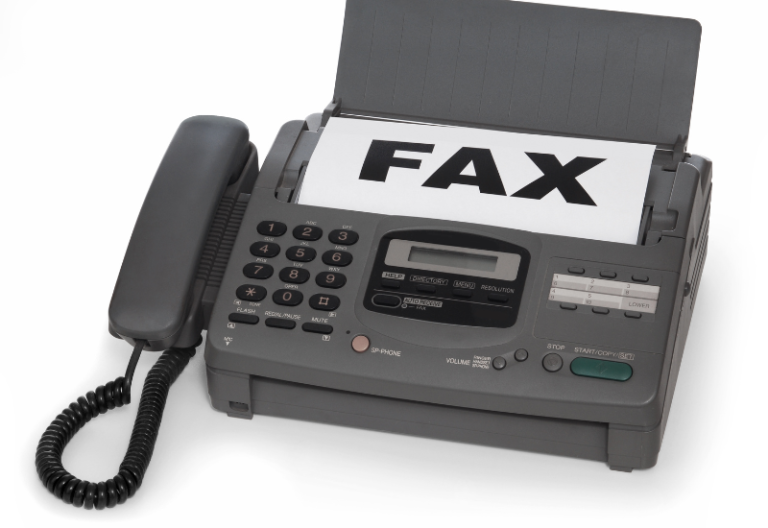The healthcare industry is notorious for handling piles upon piles of files and documents daily, from health records to faxing a prescription to a hospital and health insurance claims. Even in a highly digital era where electronic health records exist, many practices could not do away with physical copies.
So a big question looms: Is going paperless even possible in the health sector? The simple answer is yes. However, it takes a lot of work and time to fully transition into a digital environment. This article will guide you through some simple steps you can take to start your paperless journey in your practice.
Table of Contents:
- Why does the health sector need to go paperless?
- How to go paperless in healthcare?
- What are the tools that help you go paperless?
Why does the health sector need to go paperless?
Aside from contributing to the preservation and protection of Mother Nature, there are a handful of great reasons why the health sector needs to start going paperless. Here are some of them:
Reduce security risks
Keeping paper medical records and physical copies of other highly sensitive patient files puts your data at such a great risk. It leaves your data in a highly vulnerable position. Unauthorized individuals can easily access any of your physical files and steal them.
However, when you go paperless and only manage digital files, you can configure restrictions to allow specific individuals in your practice to have access to important data. Moreover, software designed explicitly for healthcare digitalization uses the highest security features to reduce any risk of breaches and cyberattacks.
If you want to safeguard your data better, switch to a more digital approach in document management.
Simplify document management
Do you know how much time, on average, an organization spends scouring through files to look for a specific document? Studies have shown that most organizations spend at least four weeks each year handling paper documents alone. That’s four weeks that could’ve been spent on something more important and impactful.
Going the digital route cuts that time spent in half, maybe even more. You and your staff do not have to spend precious time searching for health records. With the right document management tools, you can type the document you are looking for, and the system will automatically pull the files out for you.
Moreover, updating patient charts is another time-consuming task that you can simplify if you go paperless. Doing it manually does not only take so much time; it also takes a lot of effort. Can you imagine having to update over a hundred records regularly? To optimize this process, you can invest in EHR software.
Going paperless in the health sector helps you run your practice more smoothly and efficiently.
Cut down costs
According to a report, an average office worker uses 10,000 sheets of paper annually. Can you imagine how much that would cost your practice? Eliminating the use of paper in your practice can save you a whole lot of money. Not only do you stop buying paper (or at least reduce its purchase), but you can also do away with printing costs and buying storage devices.
How to go paperless in healthcare?
Is going paperless even possible in the health sector? Yes, it certainly is. However, it’s not as straightforward as just eliminating the use of paper. There are a few considerations you need to take into account. But to get you started with your paperless journey, here are some tips and tricks:
- You do not need to overhaul your document management system all in one go. To make the transition easier and more manageable, you can select certain documents (e.g., health records and billings) you can transform digitally. Once that’s all up and running smoothly, you can move to the next type of document. Going paperless takes a bit of time, so there’s no need to rush.
- When you start to digitalize your practice, you have to make necessary changes to your workflow for a more seamless transition. Map out the current workflow and remove unnecessary processes once you’ve switched to a paperless workflow. By doing so, you will be able to identify any parts of your process that cause bottlenecks, and you can address them accordingly.
- Take your patients along on the journey. It’s always a great idea to get them involved with the whole transition to avoid any complaints. Some patients, especially the elderly ones, need time adjusting to a more digital approach. Let them know about your intention to go paperless as soon as you start.
What are the tools that help you go paperless?
Introducing the right set of tools and software into your workflow can tremendously help you go paperless. Here are some that are indeed worth the investment:
Electronic Health Record (EHR) System
This can simplify the bulk of your administrative tasks and help you go paperless. It can do many functions such as managing billings, updating medical records, generating e-prescriptions, and providing a portal for your patients to access their data easily.
Cloud Storage
One of the main concerns many people express when going paperless is where they exactly store their files and documents? Nowadays, you do not need an on-premise server, which is quite a costly storage device that requires a complicated setup. Cloud storage offers a great storage solution without the need for additional infrastructure. This also means that you can access any document you store on the cloud anywhere.
Online Faxing Services
Faxing is essential to the healthcare industry as it’s one of the safest and most reliable ways to share patient information and other medical documents. However, traditional faxing requires physical copies of documents, and it prints the transmissions. Luckily, you can now send faxes digitally through online faxing services. It essentially works like an email, except it uses a higher level of security to keep the transmission safe.
When it comes to online faxing, iFax remains the top provider trusted by over five million people across the globe. It has been in the industry for more than ten years, offering the lowest cost faxing solution in the market. With plans that start at $8.33 a month, you can take advantage of their other features, such as unlimited cloud data storage, programmable fax API, OCR capabilities, military-grade 256-bit end-to-end encryption, and so much more.
Check out what else iFax offers.
Conclusion
Is going paperless even possible in the medical and health sector? To reiterate, yes, it most certainly is. It might be a long journey, but with a bit of time and a whole lot of work and effort, you can eliminate using paper in your practice. Hopefully, the tips we shared can help you with your transition.










